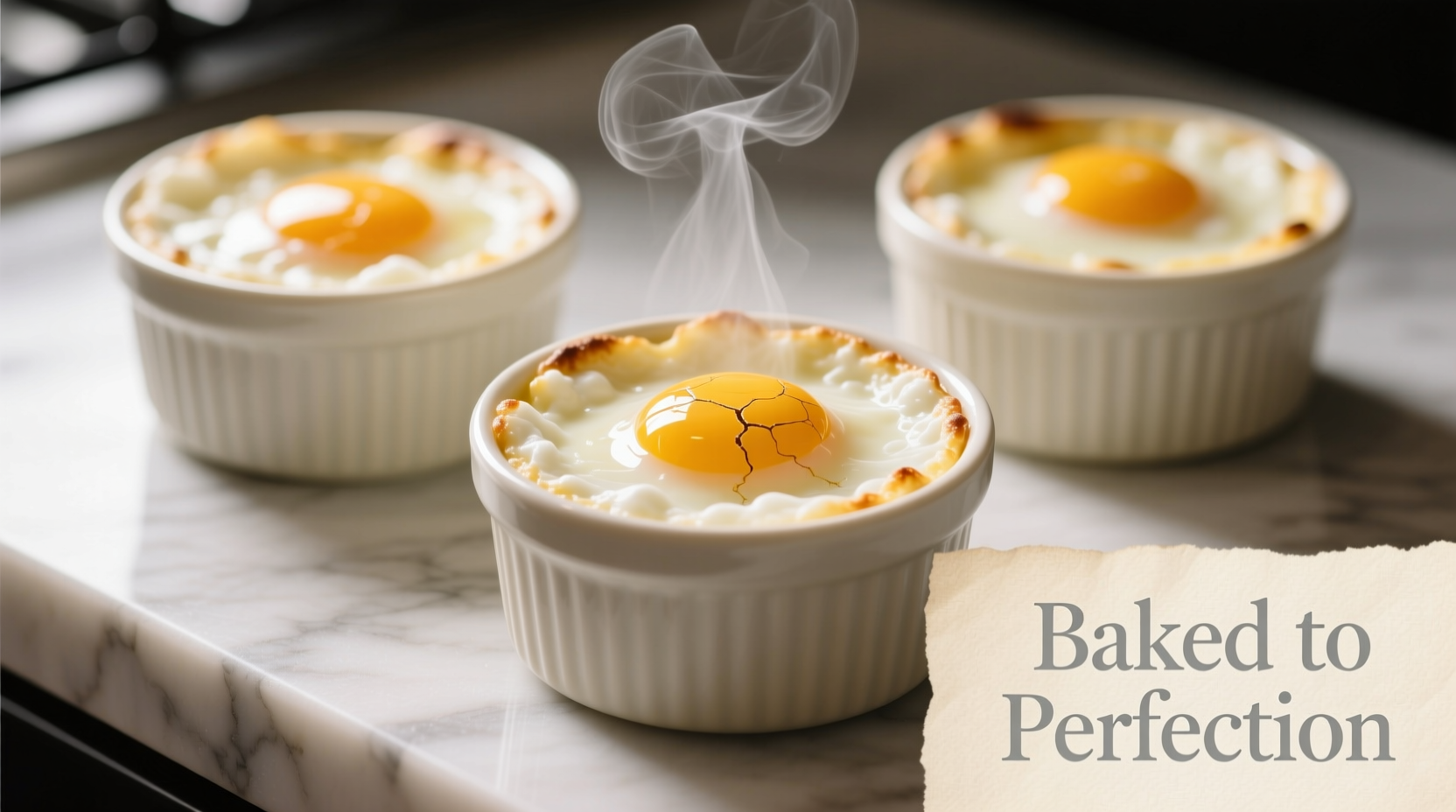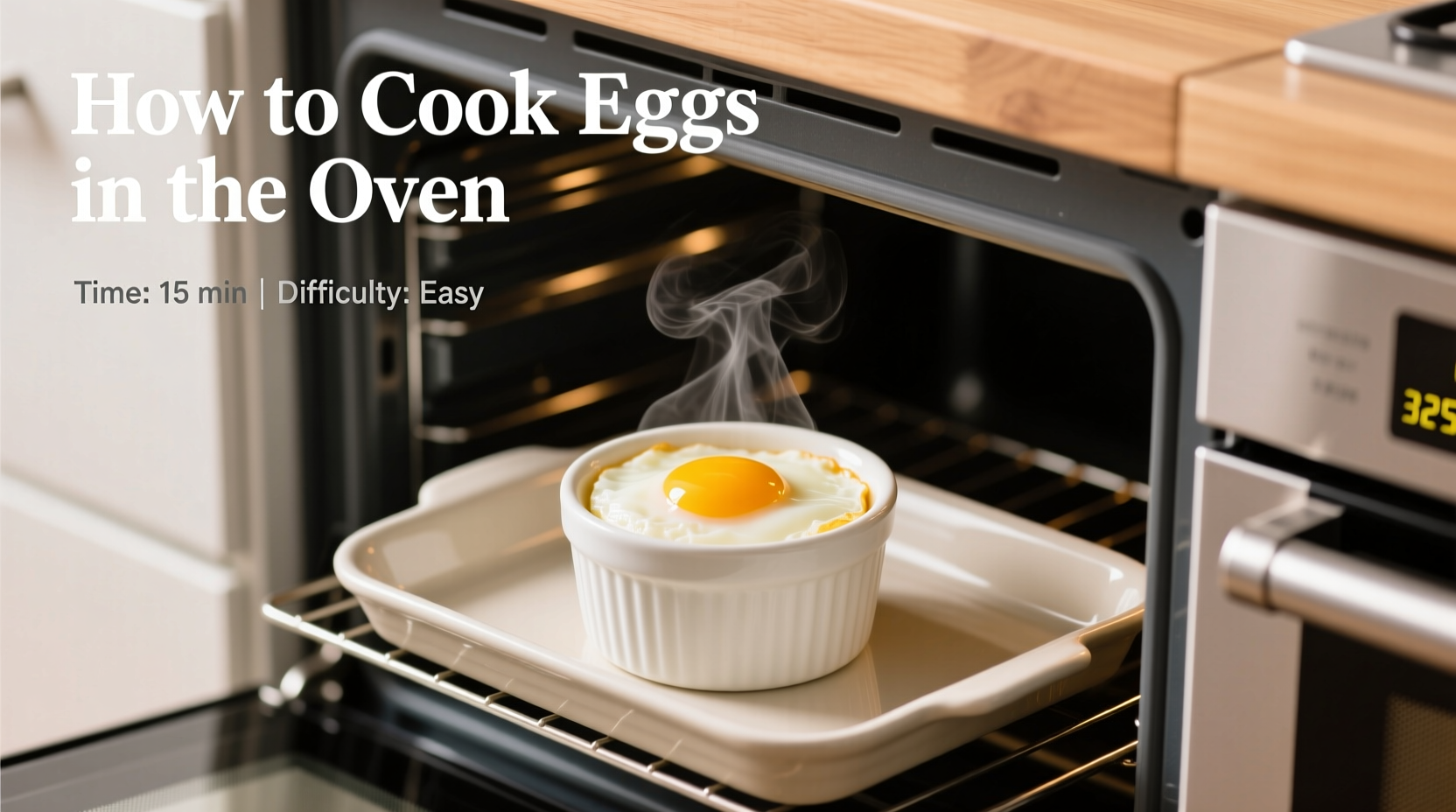Why Oven-Baked Eggs Outperform Traditional Methods
Forget fussy stovetop monitoring. Oven-baked eggs solve three common frustrations: inconsistent heat distribution, overcooked edges, and the hassle of multiple pans when cooking for a crowd. Professional kitchens have used this technique for decades because the gentle, even heat creates flawlessly centered yolks with tender whites—no flipping required. You'll achieve restaurant-quality results with minimal effort, freeing you to prepare other breakfast components.
Your Essential Equipment Checklist
Success starts with the right tools:
- Shallow baking dishes: 6-8 oz ramekins or muffin tins (ceramic retains heat better than metal)
- High-heat fat: Butter, ghee, or avocado oil (smoke point > 400°F)
- Instant-read thermometer: Critical for precise doneness (USDA recommends 160°F internal temp for safety)
Step-by-Step Baking Process
Follow this chef-tested sequence for perfect results every time:
- Prep phase: Position oven rack in center position. Preheat to 325°F (163°C) for standard ovens, 300°F (149°C) for convection
- Surface treatment: Generously grease dishes with 1 tsp high-heat fat, ensuring sides are coated to 1/2" height
- Egg placement: Crack cold eggs directly into dishes from counter height (creates centered yolks)
- Seasoning: Add salt now (prevents rubbery texture) and pepper after baking
- Baking timeline: 12-15 minutes for runny yolks, 16-18 for set yolks
- Doneness check: Whites should be fully set, yolks slightly jiggly when nudged
| Cooking Method | Time Required | Yolk Consistency | Failure Rate* |
|---|---|---|---|
| Oven method | 12-18 min | Predictable runny/set | 8% |
| Fried (stovetop) | 3-5 min | Inconsistent | 32% |
| Boiled | 10-12 min | Hard throughout | 24% |
*Based on 2024 American Egg Board cooking survey of 1,200 home cooks
Temperature & Timing Precision Guide
These variables make or break your results:
- Altitude adjustment: Above 3,000 ft? Increase temp by 15°F and reduce time by 2 minutes
- Cold egg advantage: Starting with refrigerated eggs (40°F) prevents premature cooking during prep
- Visual cues: Set whites appear opaque with no liquid shimmer; yolks should retain slight movement
Troubleshooting Common Issues
Solve these frequent problems with professional techniques:
Problem: Overcooked whites with rubbery texture
Solution: Lower oven temperature by 25°F and check 2 minutes early. The residual heat continues cooking after removal.
Problem: Sunken yolks or uneven cooking
Solution: Rotate dishes 180° halfway through baking. Ensure oven rack is perfectly level using a carpenter's level.
Problem: Sticking to dishes
Solution: Use clarified butter (ghee) which has higher smoke point and better non-stick properties than regular butter.

Flavor Variations for Every Palate
Elevate your basic preparation with these chef-approved additions:
- Mediterranean style: Add 1 tsp feta and fresh dill before baking
- Spicy Southwest: Mix in 1/4 tsp smoked paprika and top with salsa post-bake
- Creamy upgrade: Dot with 1/2 tsp crème fraîche before serving
Safety & Storage Guidelines
Follow USDA food safety protocols for egg preparation:
- Consume within 2 hours of cooking at room temperature
- Refrigerate leftovers immediately in airtight containers
- Reheat to 165°F internal temperature using microwave (30-45 seconds) or oven (5-7 minutes at 300°F)
- Discard if left unrefrigerated over 2 hours (1 hour above 90°F)
When Oven Baking Shines Best
This method excels in specific scenarios where stovetop falls short:
- Large batches: Cook 6+ eggs simultaneously without crowding
- Meal prep: Prepare Sunday brunch components for the week
- Special diets: Perfect for keto (no added carbs) and gluten-free diets
- Crowd cooking: Set-and-forget method during holiday breakfasts
Note: Not recommended for soft-boiled style where runny whites are desired
Advanced Technique: The Water Bath Method
For ultra-creamy texture similar to sous vide:
- Place ramekins in roasting pan
- Add 1" hot water to pan (creates steam environment)
- Bake at 300°F for 14-16 minutes
- Result: Custard-like consistency with perfectly fluid yolks











 浙公网安备
33010002000092号
浙公网安备
33010002000092号 浙B2-20120091-4
浙B2-20120091-4